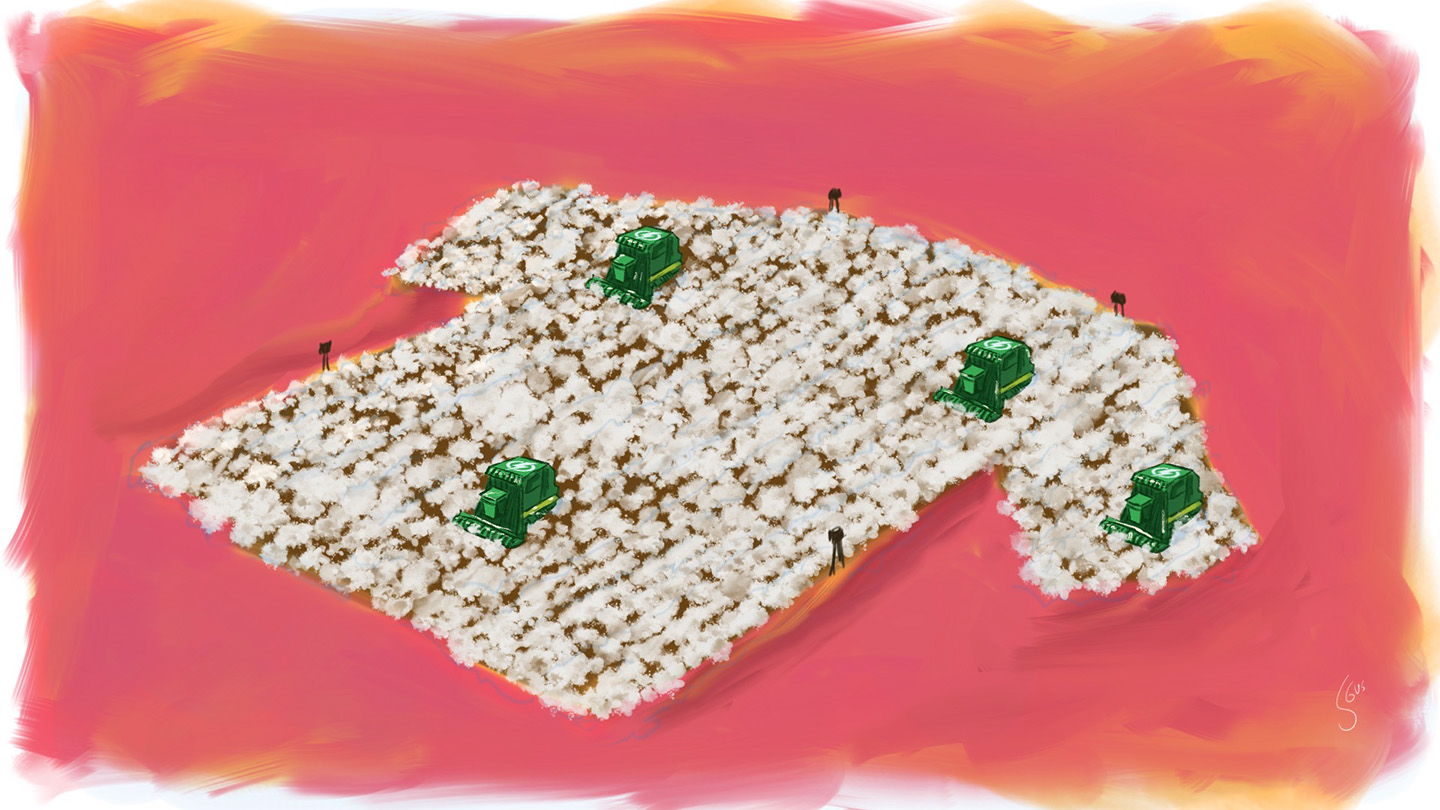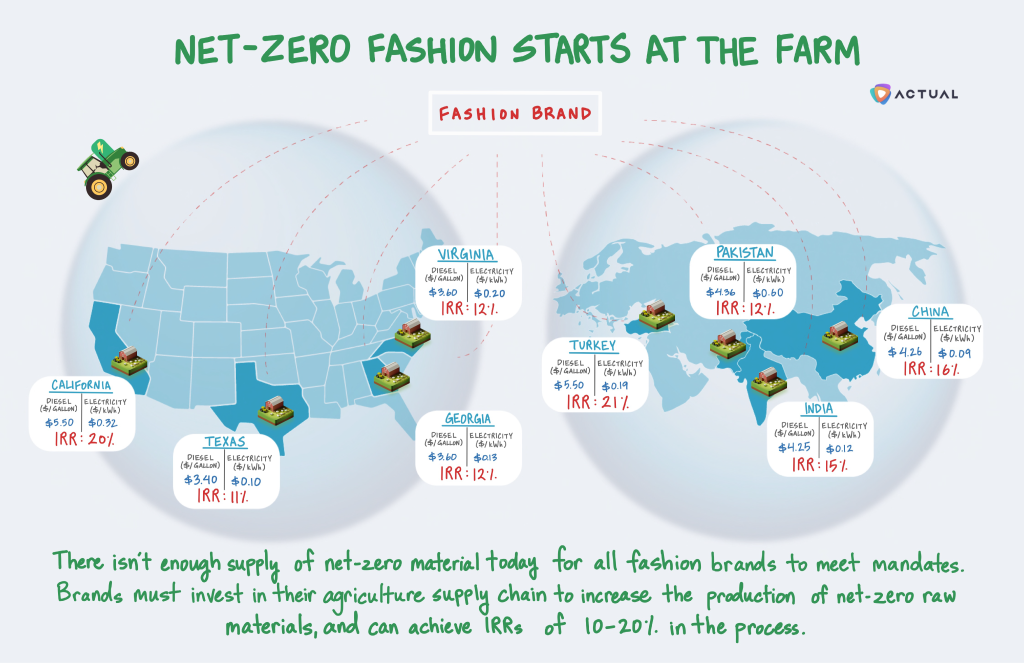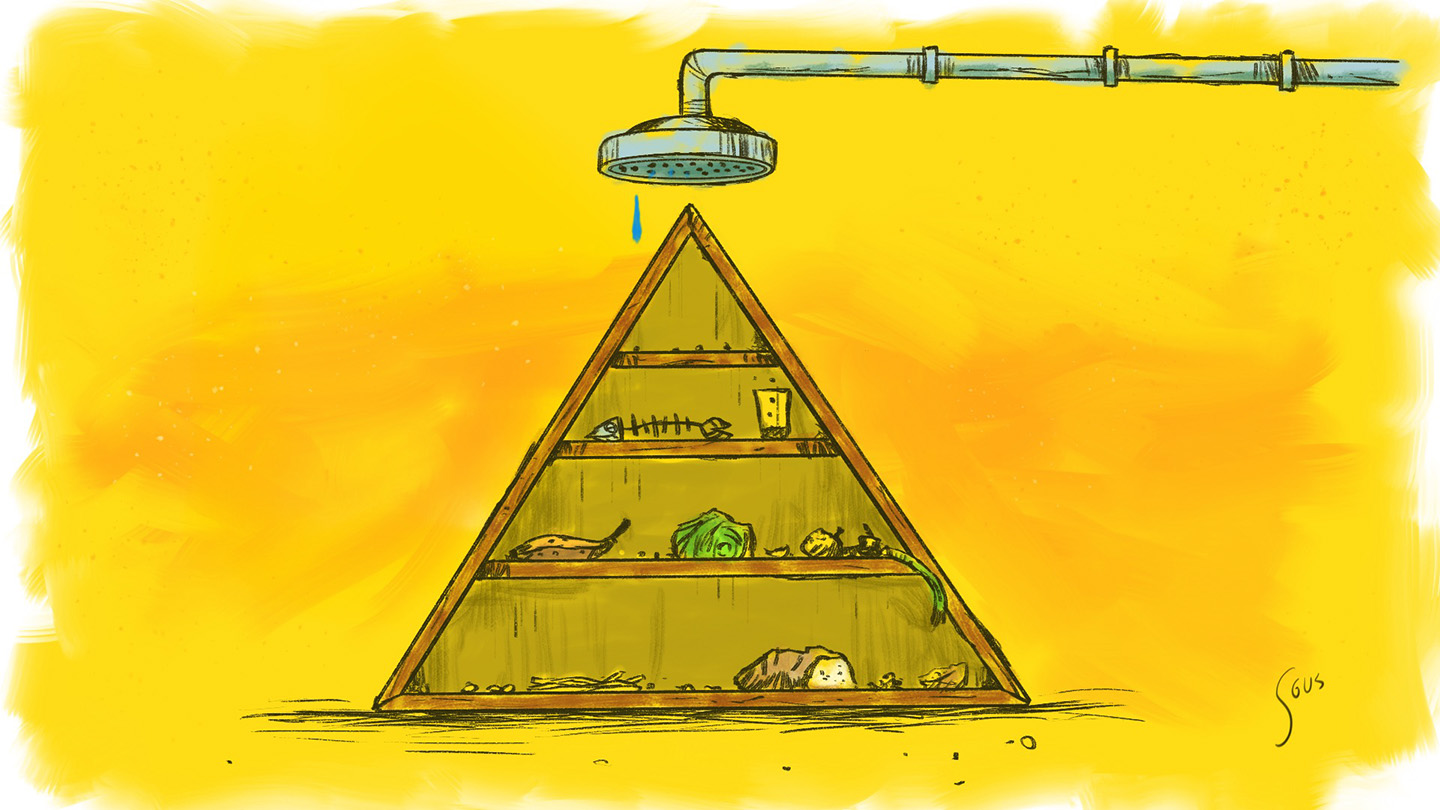
October 10, 2023
Net-Zero Fashion Starts at the Farm
The European Union and the United States have recently passed stringent policies against greenwashing and the use of ambiguous terms like "eco-friendly," "sustainable," or "natural" on consumer products. Fashion brands must now invest in their sustainability transition, driving real progress beyond pledges and commitments.
Meeting these mandates presents opportunities for the fashion industry to operate sustainably all the way from farm to runway.
Today, there simply isn't enough supply of net-zero materials like cotton, wool, and linen for all fashion brands to achieve their "net-zero" goals. Limited volume of sustainable materials not only delays a collective industry transition but also constrains how much and what you can produce, increasing unsustainable green premiums.
Investing directly in farms increases the supply of true net-zero materials and, as a result, decarbonizes the supply chain and also provides pure financial returns and increased IRRs.
How does this affect you?
Fashion company CEOs need to champion sustainability transformation from the top-down by communicating the value of sustainable practices to every stakeholder.
Fashion company CFOs and capital planning teams need to maximize long-term cost competitiveness and ROI by finding opportunities to invest in their supply chains and suppliers.
Fashion company sustainability teams need to look beyond accounting and reporting, working hand-in-hand with capital planning teams to drive real-world change.
Materials producers need to collaborate with fashion companies to deploy zero-emissions farm equipment and implement sustainable practices such as regenerative agriculture.

More than 27 million tons of cotton are cultivated worldwide annually— almost none is net-zero. Most GHG emissions from conventional cotton production result from the use of diesel fuel (60%), followed by irrigation (23%).
Diesel engines power 75% of all farm equipment and 20% of irrigation pumps. However, electric tractors that match the capacity of diesel tractors are becoming more commercially available. This example illustrates how financing the electrification of your suppliers’ farm equipment can generate returns while reducing operational costs.
Fashion companies that subsidize the cost of an electric tractor for their suppliers could see a full payback as early as in 4 years:
Expensive Diesel Fuel Rates: In locations where diesel fuel costs more than $5 per gallon (California or Turkey), the IRR is as high as 21% and OPEX is reduced by up to 80%.
Average Diesel Fuel Rates: In other locations where diesel fuel costs are near the global average of $3 - $4 per gallon, the IRR still results above 10% because of how efficiently electric equipment operates.
As the fashion industry continues to grow, demand for sustainable materials will be harder to source if farms continue to operate with heavy-emission machinery. What are other opportunities for investment?
Installing AgriPV: Implementing solar panels to power equipment and irrigation systems will reduce electricity use from the grid and further lower operational expenses.
Regenerative agriculture: Practicing rotational cropping and growing more native plants on deforested land will optimize carbon sequestration and healthy soils, lessening the need for harmful fertilizers and pesticides.
Electrifying transportation equipment: Beyond tractors, farms can also electrify trucks that carry materials on the field or are used for transport to processing facilities.
Subsidizing sustainable solutions like electric tractors boosts demand for green technology, eventually lowering costs and setting sustainability as the default pathway for the agricultural industry.
Implementing farm-level investments will require involvement at every level of the organization, including unwavering support at the executive level. Many small farms are not vertically integrated, supply chains are global, and challenges exist beyond physical investments. However, fashion companies who actively invest in farms will see almost immediate value both financially and environmentally.
Echoed by industry leaders at New York Climate Week, farmers today are experiencing real consequences of climate change. While tackling the complexities of a supply chain is undoubtedly a formidable challenge, it can be solved. As seen in partnership with the Better Cotton Initiative, over 75,000 Pakistani farmers have cost-effectively reduced the use of water and harmful pesticides and fertilizer, all while cropping equivalent or higher yield.
Not one farm or one fashion brand can do this alone, we must all actively transform the supply chain together.
Until next time,
Actual
Data from Farm Machinery Cost Calculations (Mississippi State University), Petroleum and Other Liquids (EIA), Electric Schedule Ag-V (PG&E), Residential & Farm/ Ranch (PEC), Farm, Civic, and Ancillary Residential Service (Rappahannock Electric Cooperative), Farm Schedule (Georgia Power), Diesel Prices and Electricity Prices (Global Petrol Prices)
More recent newsletters
April 25, 2024
ACTUAL
Catalonia, Spain, has recently declared a drought emergency as reservoirs plunge to critically low levels at just 15% of full...
April 11, 2024
ACTUAL
The automotive industry has been undergoing a drastic transformation, transitioning from combustion engine vehicles to include EVs, hybrid engines, and...
March 21, 2024
ACTUAL
The thrilling races of Formula 1 are powered by behind-the-scenes innovation, where even the slightest tweaks in aerodynamics or engine...


